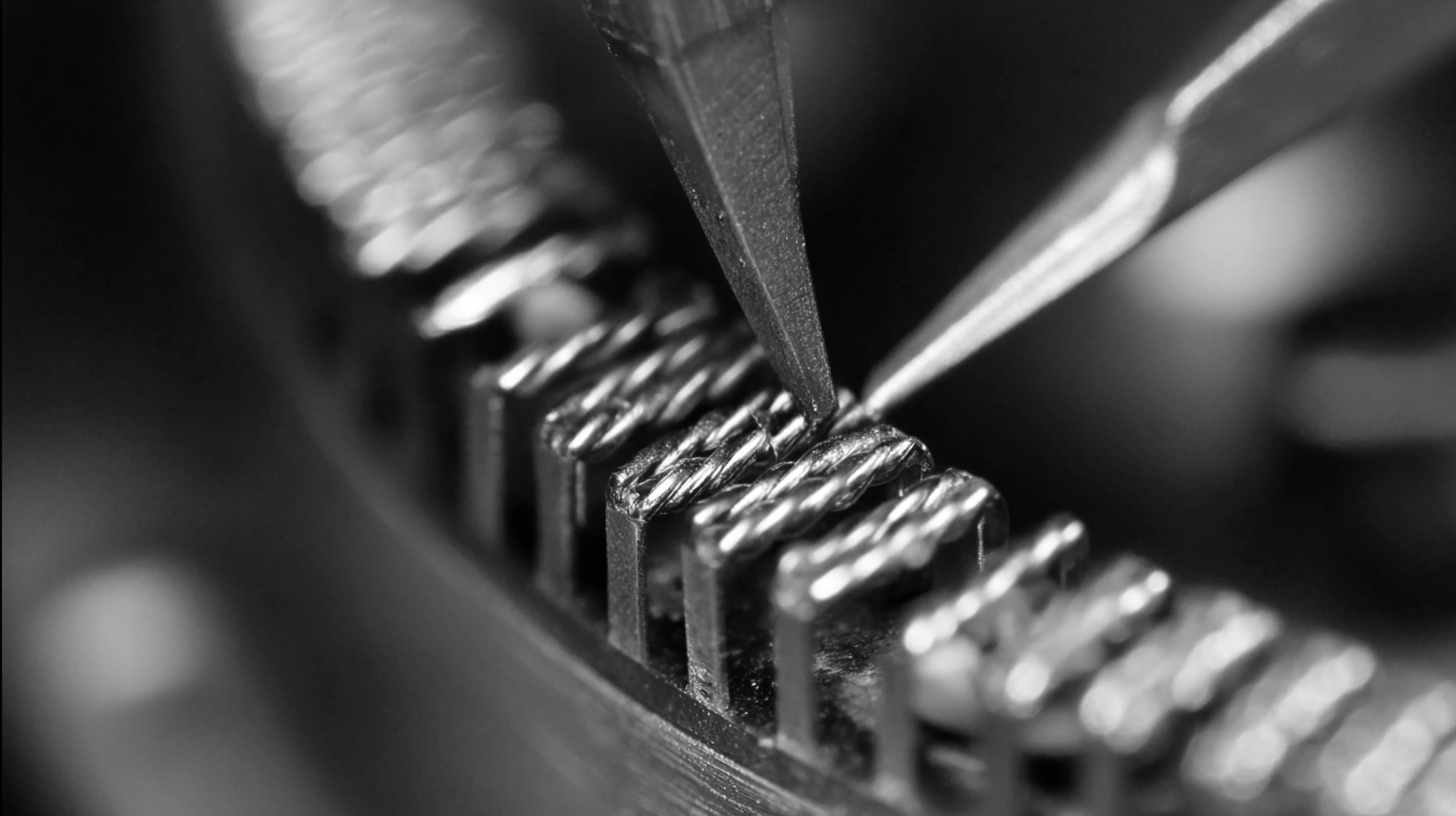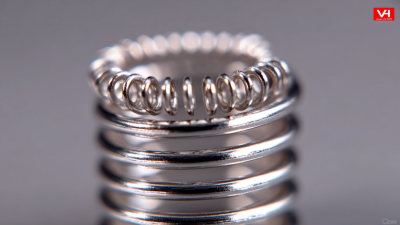Leave Your Message
In recent years, the demand for innovative components in modern electronics has surged, leading to the rising prominence of Small Touch Springs. These miniature structures not only enhance user interaction through tactile feedback but also play a crucial role in the miniaturization of devices.
According to a report by Research and Markets, the global market for electronic components is expected to grow at a CAGR of 5.3% from 2021 to 2026, highlighting the importance of efficient and compact technologies. Small Touch Springs offer solutions that significantly improve the performance and reliability of touch interfaces in a variety of applications, from smartphones to wearable devices.
As functionalities expand and consumer expectations evolve, understanding the unique advantages of Small Touch Springs becomes essential for engineers and manufacturers aiming to revolutionize product design in the competitive electronics landscape.

The evolution of small touch springs has significantly transformed the landscape of modern electronics, catering to the demand for more compact and efficient devices. Initially used in basic switch mechanisms, small touch springs have undergone a variety of innovations that have enhanced their functionality. Advances in materials science, such as the use of lightweight yet durable alloys, have led to the creation of springs that are not only more responsive but also capable of withstanding increased wear and tear. This improvement has facilitated a smoother user experience in everything from smartphones to wearable technology.
Moreover, precision engineering has allowed for the development of smaller and more intricate touch spring designs, enabling manufacturers to fit them into increasingly compact spaces without compromising quality. The integration of smart technologies, such as haptic feedback systems, has further elevated the role of small touch springs in user interfaces, delivering realistic sensations that enhance interaction.
As electronic devices continue to shrink in size while becoming more complex, the innovations in small touch springs demonstrate their critical role in shaping the future of responsive and intuitive technology.
The market for compact and efficient touch springs is witnessing significant growth, driven by the increasing demand for lightweight and space-saving electronic components. As industries evolve, especially in consumer electronics and automotive applications, the need for innovative spring solutions has never been greater. The miniaturization of devices requires components that are not only functional but also capable of optimizing performance in limited spaces.
 Small touch springs meet these needs by providing reliable tactile feedback while being designed to fit seamlessly into compact electronics.
Small touch springs meet these needs by providing reliable tactile feedback while being designed to fit seamlessly into compact electronics.
Tips: When selecting touch springs for your application, consider the material and manufacturing process, as these factors influence durability and responsiveness. Additionally, testing various spring profiles can help ensure optimal performance in your specific use case.
As the landscape of technology shifts towards smaller, smarter devices, companies are increasingly recognizing the importance of integrating compact touch springs. This trend is reflected in sectors such as automotive, where feature-rich interiors demand sophisticated electronic controls. Understanding how these components can enhance user experience is critical for manufacturers aiming to stay competitive in the evolving market.
Tips: Collaborating with expert engineers during the design phase can facilitate innovative solutions, ensuring that your product remains at the forefront of market developments while meeting consumer expectations.
 Touch springs, crucial components in modern electronics, play a significant role in enhancing the performance metrics of various devices. These small yet powerful springs provide tactile feedback, ensuring that user interactions are both responsive and satisfying. Their unique design enables them to absorb, store, and release energy efficiently, which translates into improved accuracy and speed when it comes to operations such as tapping, swiping, or pressing. The incorporation of touch springs often leads to a reduction in the required actuation force, enhancing user experience by making devices more intuitive and easier to operate.
Touch springs, crucial components in modern electronics, play a significant role in enhancing the performance metrics of various devices. These small yet powerful springs provide tactile feedback, ensuring that user interactions are both responsive and satisfying. Their unique design enables them to absorb, store, and release energy efficiently, which translates into improved accuracy and speed when it comes to operations such as tapping, swiping, or pressing. The incorporation of touch springs often leads to a reduction in the required actuation force, enhancing user experience by making devices more intuitive and easier to operate.
Moreover, the impact of touch springs on device functionality extends beyond user interface satisfaction; they also contribute to the durability and reliability of electronic products. By minimizing wear and tear, touch springs help maintain consistent performance over time, reducing the likelihood of malfunction due to fatigue. In competitive technology landscapes where user experience is paramount, the integration of touch springs is an innovative solution that not only boosts the performance metrics of devices but also positions them as leaders in functionality and longevity.
In the rapidly evolving landscape of electronics, the sustainability of materials used in manufacturing has become a pivotal concern. Recyclable touch spring materials are at the forefront of this shift, offering a solution that not only enhances performance but also minimizes environmental impact. Traditionally, electronic components have relied heavily on non-recyclable materials, contributing to significant waste. By integrating touch springs made from materials like stainless steel or specialized polymers, manufacturers can create components that are not only durable but also fully recyclable.
The adoption of these recyclable touch spring materials marks a significant step toward sustainability in electronic design. Their inherent properties allow for easy disassembly and repurposing, which can play an essential role in fostering a circular economy. As consumers become more environmentally conscious, the demand for products that prioritize sustainability increases. By investing in recyclable materials, manufacturers not only comply with emerging regulations but also resonate with a growing market segment that values eco-friendly practices, thus revolutionizing the approach to modern electronics.
| Material Type | Tensile Strength (MPa) | Elastic Modulus (GPa) | Recyclability (%) | Common Applications |
|---|---|---|---|---|
| Stainless Steel | 580 | 200 | 70 | Smartphones, Laptops |
| Beryllium Copper | 900 | 200 | 85 | Keyboards, Switches |
| Phosphor Bronze | 650 | 110 | 90 | Electrical Contacts, Sensors |
| Aluminum Alloy | 280 | 70 | 95 | Portable Devices, other Electronics |
| Plastic Composite | 120 | 30 | 100 | Home Appliances, Toys |
As technology continues to evolve, small touch springs are becoming essential in the design of consumer devices. These innovative components not only enhance tactile feedback but also improve overall functionality in various gadgets. The integration of touch springs allows for more compact designs while ensuring a satisfying user experience. This means devices can be sleeker and smarter, appealing to the modern consumer’s preference for both aesthetics and performance.
**Tip:** When considering the implementation of touch springs in your designs, focus on the material’s elasticity. Different materials can significantly affect the sensitivity and durability of the springs, impacting the device's longevity and user satisfaction.
Looking ahead, manufacturers are likely to incorporate advanced touch spring technologies such as haptic feedback and customizable pressure sensitivity. This trend will enable users to personalize their interaction with devices, providing tailored experiences that adapt to individual preferences. As we witness these developments, it's clear that the future of consumer electronics is gearing towards more intuitive and responsive interfaces.
**Tip:** Always prototype with various designs and materials to test how touch springs can meet your specific device requirements better, allowing you to find the optimal balance between user feedback and ergonomic design.






